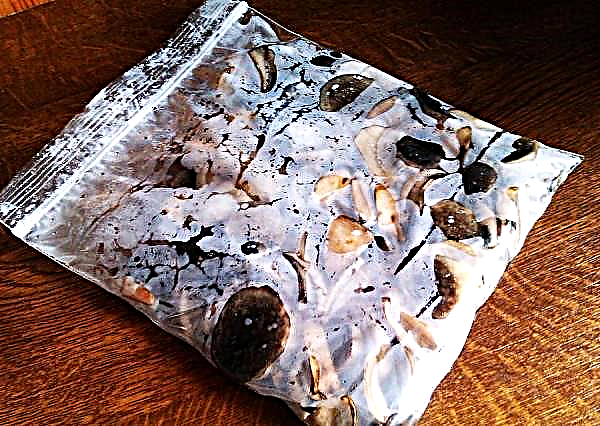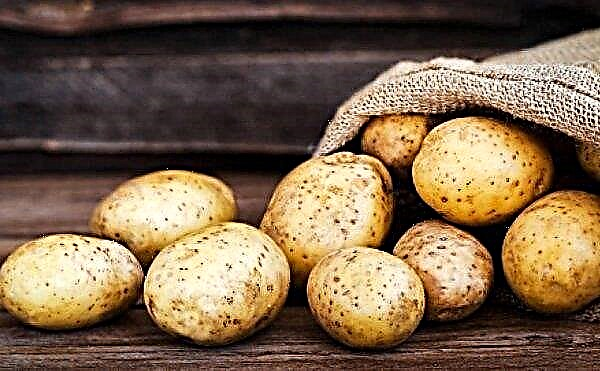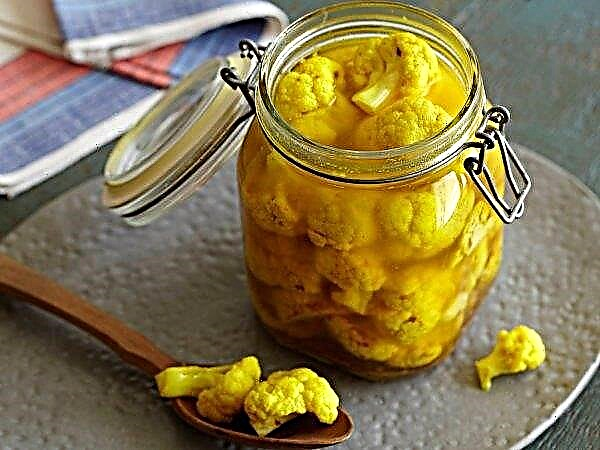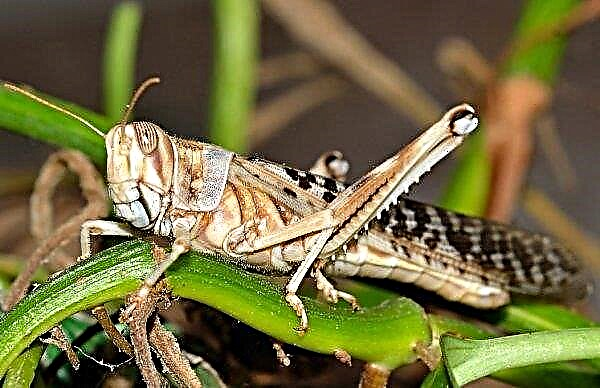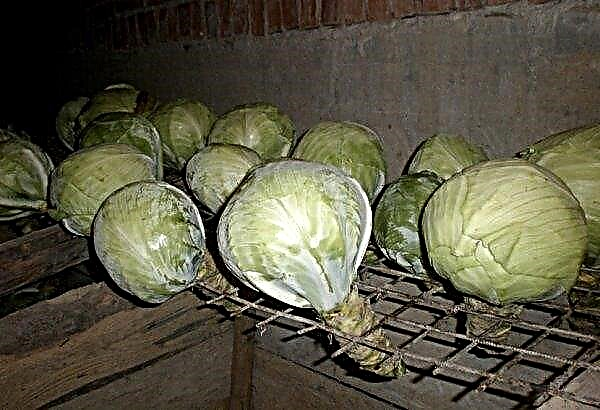Modern technologies have touched such a field as beekeeping. Traditional hives made of wood are a thing of the past, while they are being replaced by designs made of the latest materials such as polystyrene foam (PPS) and polyurethane foam (PUF). Read more about the advantages and disadvantages of polyurethane foam hives - in this article.
Did you know? To produce 100 g of honey, one bee needs to overcome 46 thousand km and land on 100 thousand flowers.
Features of polyurethane foam hives
Polyurethane foam was synthesized in 1937 by German scientists. So called the group of gas-filled plastics based on polyurethane. Polyurethane foam is widely used in construction, for example, for insulation, heat and sound insulation, or as a sealant (polyurethane foam), in the home, industry. This is a very lightweight, durable material, characterized by low heat conductivity and vapor permeability and good adhesion to other materials. In foreign beekeeping for the production of hives, this material began to be used since the 60s of the last century. Domestic beekeepers adopted this technology not so long ago, having first-hand experience of its many advantages and learning about the disadvantages.
In foreign beekeeping for the production of hives, this material began to be used since the 60s of the last century. Domestic beekeepers adopted this technology not so long ago, having first-hand experience of its many advantages and learning about the disadvantages.
Benefits
- Among the advantages of polyurethane foam hives should be mentioned:
- Good moisture resistant qualities of the material, which allows you to successfully resist decay, mold and destruction.
- Excellent thermal insulation characteristics that keep the temperature inside the bee house optimal for insects.
- Good soundproof properties.
- Strength.
- Long term of operation.
- Environmental friendliness.
- Spaciousness, which allows you to place numerous families in one hive.
- Easy to disassemble and assemble.
- Ability to resize up or down.
Disadvantages
- The main disadvantages among them are:
- They can deteriorate with prolonged exposure to the sun, therefore they require painting.
- The need to replace some parts every 5 years, as the bees gnaw at them.
- The need for weighting, as they are unstable with gusts of wind.
- Fair ventilation.
- High price.
Making hives from polyurethane foam at home
It is possible to buy hives from PPU in a ready-made form. Today on the market there are many models from various manufacturers, for example, “Nizhegorodets”, “Himekselen”, “Bjolar”, “Nastusya”, “Himtrust”, etc. It is also possible to make houses for bees with your own hands, starting from filling the case.
Important! For the manufacture of bee houses, you need to choose only high-quality polyurethane foam. Signs of low-quality material are gray color, porosity, specific smell.
You can make a hive from polyurethane foam quickly, but some knowledge and skills will be required. It is important to prepare the necessary materials, tools and components for pouring, as well as clearly follow the manufacturing instructions. The recommended temperature in the room where the hive is made is + 18 ... + 25 ° С.
Necessary materials and tools for work
To make a polyurethane foam house for bees you will need:
- molds for making the case;
- release agent;
- roller;
- 2 containers for filling components (plastic buckets of 0.5 l are suitable);
- a wooden spatula (kitchen) or a trowel to clean the remains of the fill from the bottom;
- special mixer or drill with nozzle for mixing paint and concrete;
- components for filling polyurethane foam - polyol and isocyanate;
- kitchen scales for accurate dose measurement of components;
- screwdriver (screwdriver);
- self-tapping screws.

Step-by-step manufacturing instructions
It takes about 1.5 hours to make parts for the body of one hive. No additional drawings are required, as filling with the help of ready-made molds and assembly of the housing are quite simple.
Important! Polyurethane foam beehive work must be carried out in a well-ventilated area, protecting the airways with a respirator and hands with gloves.
To make the walls, roof and bottom, you must perform the following steps:
- It is good to lubricate the internal parts and protrusions of all forms with release agent using a roller.
- Leave the grease to dry completely.
- Set the molds at a slight slope for better distribution of the casting mixture.
- Prepare the required number of components for pouring.
- Pour the isocyanate into the polyol and very quickly - in 10–20 s — mix the components to a uniform consistency with a drill nozzle and pour into one of the forms.
- Cover the mold and secure with latches.
- Open the lid after 40-60 minutes.
- Fill the molds for walls, roof and bottom in the same way. Before each subsequent filling, the mold must be cooled to + 45 ° C and below.
Video: how to make a polyurethane foam hive with your own hands
The hive body must be assembled as follows:
- Connect the dovetail wall joints.
- Alternately connect each pair of upper and lower joints, the central parts using self-tapping screws.
- To put on the external case a paint used for external works, for example ENAMEL, PF or others.
Did you know? The oldest find of a bee, excavated by paleontologists in Burma, is attributed to the period 100 million years ago. The found insect is a transitional form from a carnivorous wasp to a pollinating bee.
How to use polyurethane foam hives
Before you start using polyurethane foam bee houses, you need to familiarize yourself with the rules for their operation:
- From early spring to late autumn, and also if wintering is carried out in the open air, the valve of the anti-mite and ventilation mesh should be completely closed. This will maintain a stable temperature inside. At other times, the use of a valve is not necessary.
- Install a roof cover with ventilation holes during transportation and intensive honey collection. This will contribute to better air circulation and the removal of moisture through the bottom.
- For wintering, bee houses should be installed on a flat surface, maintaining a distance of 5-10 cm. They can be placed in 2 tiers. Top should cover them to protect from rain and wind.
- Caring for a polyurethane foam housing for bees is easy. Cleaning can be carried out using a chisel or a hard sponge, while acting extremely carefully. After purification, the insides are wiped with a 5% soda solution, heated to a temperature of + 50 ... + 60 ° C. If required, steam can be used on individual parts.
- Disinfection is carried out only by special means that are allowed for this material.
- The bottom is also cleaned with a chisel and a solution of soda. Before cleaning, remove the mite and ventilation mesh to get to the attachment points.
- As the paint exfoliates from the outside, it needs to be updated.
 To summarize the above, it should be noted that such innovations in beekeeping as polyurethane foam hives deserve the attention of beekeepers. They have a lot of advantages, easy to use and safe for humans and insects. Such designs can be made with your own hands, having acquired special molds and components for filling PPU, or you can buy them ready-made.
To summarize the above, it should be noted that such innovations in beekeeping as polyurethane foam hives deserve the attention of beekeepers. They have a lot of advantages, easy to use and safe for humans and insects. Such designs can be made with your own hands, having acquired special molds and components for filling PPU, or you can buy them ready-made.

